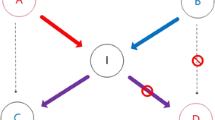Abstract
The rapid enhancement and explosive expansion of mobile communication systems will lead to an increased demand for multimedia services. Various multimedia contents will be available due to the proliferation of IPTV, video on demand, user-generated content, and content-centric networking. Therefore, multimedia service quality is becoming a critical issue. The static allocation of network resources may not be sufficient to guarantee the required service quality of multimedia in wireless networks. For ensuring the service quality, it is important to manage the resources considering the overall performance of the network and the end system. In particular, a certain level of service quality should be maintained regardless of the network situation. To achieve this objective, we first propose an architecture for service quality management and then present a detailed framework and mechanisms to maintain the desired service quality using the cooperation between communication entities in wireless networks. Simulation results are also presented to show that the proposed framework works well in wireless networks.

















Similar content being viewed by others
References
Jacobson, V., Smetters, D. K., Thornton, J. D., Plass, M. F., Briggs, N. H., & Braynard, R. L. (2009). Networking named content, CoNEXT09, December 2009.
Kovacs, A., & Godor, I. (2009). Cross-layer optimized wireless multicast for layered media. Elsevier Computer Networks, 53(7), 1062–1072.
Hsu, C.-H., & Hefeeda, M. (2011). A framework for cross-layer optimization of video streaming in wireless networks. ACM Transactions on Multimedia Computing, Communications and Applications, 7(1).
Zhang, Q., Zhu, W., & Zhang, Y.-Q. (2005). End-to-end QoS for video delivery over wireless Internet. Proceedings of the IEEE, 93(1), 123–143.
Huusko, J., Vehkapera, J., Amon, P., Lamy-Bergot, C., Panza, G., Peltola, J., et al. (2007). Cross-layer architecture for scalable video transmission in wireless network. Image Communication Journal, 22(3), 317–330.
Gupta, S. K. S., & Obeidat, S. A. (2003). A framework for adaptive voice communication over wireless channels. IEEE Wireless Communications and Networking, 2, 1096–1101.
Hindelang, T., Kaindl, M., Hagenauer, J., Schmautz, M., & Xu, W. (2000). Improved channel coding and estimation for adaptive multi rate (AMR) speech transmission. Vehicular Technology Conference Proceedings.
Barberis, A., Casetti, C., De Martin, J. C., & Meo, M. (2000). A simulation study of adaptive voice communications on IP networks. In International symposium on performance evaluation of computer and, telecommunication systems (pp. 531–542).
Holland, G., Vaidya, N., & Bahl, P. (2001). A rate-adaptive MAC protocol for multi-hop wireless networks. In ACM/IEEE international conference on mobile computing and networking.
ITU-T Rec. P.10/G.100, Vocabulary for performance and quality of service, 2008.
DSL Forum TR-126, Triple-play services quality of experience requirements, December 2006.
ITU-T Rec. G.FIDF, Framework for invoking diagnostic functions. Work in progress.
Saul, A., & Auer, G. (March 2009). Multiuser resource allocation maximizing the perceived quality. EURASIP Journal on Wireless Communications and Networking.
ITU-T Rec. Y.QMF, Architectural framework for QoE management in NGN. Work in progress, 2012.
Vukadinovic, V., & Karlsson, G. (2009). Multicast scheduling with resource fairness constraints. Springer Wireless Networks, 15(5).
Piro, G., Grieco, L. A., Boggia, G., Capozzi, F., & Camarda, P. (2010). Simulating LTE cellular systems: An open source framework. IEEE Transactions on Vehicular Technology.
The network simulator, http://www.isi.edu/nsnam/ns.
Choi, J.-G., & Bahk, S. (2007). Cell-throughput analysis of the proportional fair scheduler in the single-cell environment. IEEE Transactions on Vehicular Technology, 56(2), 766–778.
Basukala, R., Ramli, H. M., & Sandrasegaran, K. (2009). Performance analysis of EXP/PF and M-LWDF in downlink 3GPP LTE system. In Proceedings of first Asian Himalayas international conference on internet, November 2009.
Acknowledgments
This research was funded by the MSIP (Ministry of Science, ICT & Future Planning), Korea in the ICT R&D Program 2013.
Author information
Authors and Affiliations
Corresponding author
Rights and permissions
About this article
Cite this article
Kim, A., Jeong, SH. An Architecture for Service Quality Management Using Cooperative Communications. Wireless Pers Commun 74, 1045–1060 (2014). https://doi.org/10.1007/s11277-013-1343-1
Published:
Issue Date:
DOI: https://doi.org/10.1007/s11277-013-1343-1




